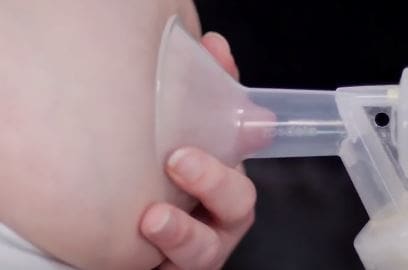BREASTMILK COLLECTION
Breast Pump Flange Sizing
test
Definition:
A breast pump can be an excellent tool for milk expression when used correctly. Every pump, whether manual or electric, has a flange. The breast pump flange is the piece of the pump that touches the breast and accepts the nipple into it. Flanges come in several sizes to fit many shapes and sizes of nipples. Flange sizes are measured in millimeters (mm) which correspond to the diameter of the nipple at its base.
It is essential for comfort and safety that flanges be sized correctly. Using the wrong size flange can cause pain while pumping, nipple damage, and incomplete milk removal. Recent findings have shown that flanges should be sized to match each nipple and due to elasticity of nipple tissue thet nipples may touch the walls of the flange during pumping. Breast pump flanges now come in sizes from 10 to 40 mm. The average nipple size is 15 mm. The most well known pump manufacturers carry 21mm as the smallest flange size. Parents may need to source smaller flanges from an alternative manufacturer.
Equipment Needed:
• Breast pump
• Measuring tool
Steps:
- Assemble pump according to manufacturer’s instructions.
- Measure the nipple with a ruler or caliper before pumping
- Place flange on breast with nipple placed in the middle of the housing.
- Turn the pump on to a comfortable speed and suction.
- Watch the nipple as it gets pulled into the flange. Is the flange comfortable? Is areola being sucked into the flange? If too little or too much space is observed, switch flange to a smaller or larger size.
- Repeat steps 2-5 until the flange is correctly sized.

Follow Up:
Remember to size to comfort and the best milk flow. The best flange size is the one that is the most comfortable and yields the most milk.
This and other how-to guides are available as free downloads

